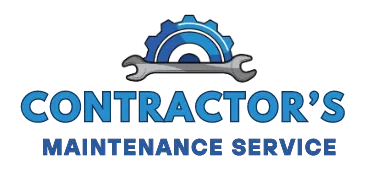
High Pressure Hoses : What you need to know
- Barbara Wissler

- May 28
- 12 min read
High-pressure hoses are essential for transferring fluids under extreme pressure in industries like construction, mining, and manufacturing. They reduce operational risks, prevent leaks, and ensure safety when dealing with hazardous materials. Here's what you need to know:
- Key Components:
- Inner Tube: Made from materials like synthetic rubber, thermoplastics, or PTFE for chemical resistance and durability.
- Reinforcement Layers: Braided (flexible, lower pressure) or spiral (durable, high pressure) steel wires provide strength.
- Outer Cover: Protects against abrasion, chemicals, and environmental damage.
- Choosing the Right Hose:
- Pressure Needs: Braided hoses handle up to 3,000 psi; spiral hoses are ideal for higher pressures.
- Flexibility: Braided hoses are more flexible, while spiral hoses are better for pressure spikes.
- Material: Thermoplastic hoses are lightweight, chemical-resistant, and handle extreme temperatures.
- Installation Tips:
- Follow proper bend radius guidelines to prevent kinking.
- Avoid twisting hoses during installation.
- Use clamps and supports to manage vibrations and maintain alignment.
- Maintenance:
- Inspect hoses every 3 months or after 400–600 hours of use.
- Check for leaks, wear, and damage regularly.
- Store hoses in cool, dry areas away from sunlight and chemicals.
- Safety:
- Wear protective gear like gloves, goggles, and steel-toed boots.
- Relieve pressure before maintenance to avoid accidents.
High-pressure hoses are critical for safe and efficient operations, but proper selection, installation, and maintenance are key to maximizing their lifespan and performance.
10,000 PSI Hydraulic Hose Selection Guide
High-Pressure Hose Components
High-pressure hoses are built with three main components, each designed to ensure safe and effective operation. Understanding the role of each layer helps in choosing the right hose and maintaining it properly. Let’s break down these components and their functions.
These hoses typically handle pressures ranging from 3,000 to 6,000 psi. Below, we’ll explore the unique purpose of each component.
Inner Tube Materials and Fluid Compatibility
The inner tube forms the core of a high-pressure hose, directly interacting with hydraulic fluid. Its material needs to resist chemical breakdown to ensure durability.
- Synthetic rubber, like nitrile rubber (NBR), is widely used due to its strong resistance to oil, fuel, and corrosion.
- Thermoplastic materials stand out for their exceptional abrasion resistance - lasting up to 10 times longer than traditional rubber hoses. They also offer chemical resistance, UV protection, and a lighter weight.
- PTFE (Teflon) inner tubes are ideal for extreme conditions, handling temperatures up to 450°F (232°C) and resisting harsh chemicals.
Choosing an inner tube material that matches your hydraulic fluid and operating conditions is critical to avoid premature wear or failure.
Reinforcement Layers
Reinforcement layers are what give high-pressure hoses their strength. Without these layers, the inner tube would collapse under intense pressure.
"On its own, a hose's core can only handle very low pressures. A reinforcement layer is incorporated to give the core tube strength both axially and longitudinally, helping the hose withstand the demands of the application." – Doug Nordstrom, Senior Product Manager, Hose Products, Swagelok
There are several types of reinforcements, each suited to specific needs:
- Braided reinforcement uses a criss-cross pattern of steel wires. This design offers flexibility and tensile strength, making it suitable for low to medium pressure applications. However, the braids can lose strength over time due to internal friction.
- Spiral reinforcement arranges steel wires in a helical pattern, providing exceptional durability and resistance to high-pressure fluctuations. The trade-off is reduced flexibility, as more layers are needed to handle the same pressure, increasing the hose’s diameter and limiting its bend radius.
Reinforcement Type | Best Applications | Key Advantages | Limitations |
Braided | Low to medium pressure, frequent movement | Flexible, better bend radius | Lower pressure rating, gradual wear |
Spiral | High pressure, rapid pressure changes | Durable, handles high pressure | Less flexible, larger diameter |
- Coiled reinforcements are simpler to manufacture but lack the strength of braided or spiral designs. They may untwist under pressure, leading to early failure. Steel wire reinforcements are ideal for demanding conditions, while textile reinforcements work well for lower-pressure settings where flexibility is needed.
Outer Cover Durability
The outer cover shields the inner tube and reinforcement layers from wear caused by abrasion, chemicals, and environmental exposure. Typically made of synthetic rubber or thermoplastic, the outer layer must match the working environment. Factors like temperature changes, chemical exposure, and UV radiation can impact its longevity.
To ensure safety, the minimum burst pressure of a high-pressure hose is usually set at four times its working pressure. This safety margin accounts for pressure spikes and wear over time.
How to Choose the Right Hose
Selecting the right high-pressure hose is all about balancing operating conditions, performance needs, and safety considerations. Your choice can directly affect system efficiency, maintenance costs, and overall safety. Here's a guide to help you make an informed decision.
Braided vs. Spiral Hoses
The way a hose is constructed plays a big role in its performance. Braided hoses have an interlocking braid pattern that offers excellent flexibility, while spiral hoses use a helical reinforcement design built for strength.
Pressure requirements are a key factor. If your system operates above 3,000 psi, spiral hoses are often the better option because they handle higher pressures. For example, a ¼-inch ID spiral hose can manage up to 5,100 psi, compared to 3,200 psi for a similar braided hose.
When flexibility is a priority, braided hoses shine. A ¼-inch ID braided hose has a minimum bend radius of just 1.5 inches, whereas the same size spiral hose needs 5 inches. This difference is even more noticeable with larger diameters - a 1-inch ID braided hose requires 5.5 inches for bending, while a spiral hose of the same size needs 12 inches.
Aspect | Braided Hose | Spiral Hose |
Best Pressure Range | Up to 3,000 psi | Above 3,000 psi |
Flexibility | High | Moderate |
Bend Radius (¼" ID) | 1.5 inches | 5 inches |
Cost | Lower cost | Higher cost |
Pressure Spike Resistance | Good | Excellent |
Environmental conditions also play a role. Spiral hoses are better for systems with frequent pressure changes or high-impulse conditions because of their ability to handle pressure spikes. Meanwhile, braided hoses are ideal for setups requiring frequent movement or tight installations.
Both types of hoses maintain a 4:1 safety factor, meaning their working pressure is one-quarter of their burst pressure. Spiral hoses generally last longer in tough conditions, while braided hoses offer a more economical choice for moderate-pressure systems.
For applications requiring lightweight and chemically resistant materials, thermoplastic hoses are worth exploring.
Thermoplastic Hoses
Thermoplastic hoses are a great choice when weight and chemical resistance are priorities. They’re 40-60% lighter than rubber hoses, making them perfect for mobile equipment and complex routing.
These hoses can handle pressures exceeding 15,000 psi, depending on their material and construction. They’re particularly effective in situations with high-pressure spikes or frequent cycles.
Their standout feature is chemical and environmental resistance. Thermoplastic hoses resist UV exposure, ozone, and many chemicals better than rubber, which means a longer lifespan and lower maintenance costs. Their outer covers also provide strong abrasion resistance, making them suitable for harsh environments.
However, their temperature performance can vary. While they perform well in low temperatures, they may lose flexibility in extreme cold compared to rubber hoses. Another consideration is their "memory" effect - they don’t lay flat easily after being coiled.
Thermoplastic hoses are especially useful in applications where exposure to chemicals, UV light, or abrasive conditions is common. They’re often used in hydraulic lift equipment and lubrication lines where compact designs are needed.
Custom Hose Assemblies
Sometimes, standard hoses don’t cut it, and custom assemblies are needed to meet specific requirements. The S.T.A.M.P.E.D. method - Size, Temperature, Application, Media, Pressure, Ends, and Delivery - can help you evaluate your needs.
- Size: Consider the inner diameter for flow rate, the outer diameter for routing, and the total length for your system’s layout.
- End fittings: Proper fittings are essential to prevent leaks and ensure compatibility. Keep in mind that the assembly’s pressure rating is only as strong as its weakest component, so fittings must match your pressure needs. Fewer couplings mean fewer potential failure points.
- Application-specific needs: For example, if abrasion resistance is critical, Parker Tough Cover hoses offer up to 80 times better protection than standard rubber covers. Super Tough Cover hoses go even further, providing up to 450 times more resistance, as tested under ISO 6945 standards.
"Hose selection is a complex process that requires you to strike the right balance between cost and performance. Keeping the performance requirements of the hose top of mind from the beginning will help avoid costly rework and keep your project on schedule." – ERIKS
Involving experts early in the process can ensure custom assemblies meet both operational and budget goals. When designing, think about future needs like maintenance access, replacement costs, and potential system changes that could impact hose routing or pressure requirements.
Installation and Routing Best Practices
Getting the installation and routing right is crucial for the performance and safety of high-pressure hoses. Even the most durable hoses can fail prematurely if they're not installed correctly. Here are some key practices, drawn from industry standards, to help ensure your system operates reliably and safely.
Bend Radius and Routing
The refers to the tightest curve a hose can form without risking damage. Exceeding this limit can restrict flow, shorten the hose's lifespan, and even lead to kinking or failure.
For hoses in static setups - where they stay in one position - the manufacturer's minimum bend radius is often sufficient. However, in dynamic environments with movement, pressure changes, or vibrations, it's a good idea to use a bend radius larger than the minimum recommended. Whenever possible, aim for the largest bend radius and let the hose follow a natural curve. Additionally, avoid sharp bends near fittings. Keeping at least 18 inches of straight hose before any bend helps evenly distribute stress and reduces the risk of damage.
Temperature extremes and high pressures can stiffen hoses, making them more prone to sagging or bending excessively. To counter this, use supports and clamps to keep hoses in place, and always inspect assemblies for damage before installing them.
Proper routing not only ensures smooth installation but also helps prevent issues like torsion.
Anti-Torque Installation
While managing the bend radius is important, avoiding hose twisting during installation is just as critical. Twisting can weaken the hose's structure, shortening its lifespan and increasing the risk of failure under pressure. To minimize torque-related problems, ensure the hose and its fittings are properly aligned. Secure the hoses in place to maintain alignment and prevent any twists.
Vibration Control Methods
Vibration is a frequent culprit behind premature hose failure in high-pressure systems. Controlling vibration effectively can prevent damage and extend the life of your hoses. Flexible connectors, subplates, or base isolators can help keep vibrations from transferring between machinery and the hose assembly. Combining rigid tubing with flexible hoses is another way to enhance stability .
To prevent sagging, shaking, or rubbing against nearby equipment, secure hoses with clamps or guide rails - but make sure the hoses still have enough room to move as needed. At attachment points, using vibration-dampening clamps or isolating brackets can further reduce noise and wear, improving overall system durability.
Maintenance and Safety
Taking care of high-pressure hoses is crucial for keeping them in top shape, ensuring they last longer, reducing downtime, and most importantly, keeping people safe.
Inspection and Maintenance Schedule
Regular inspections are the backbone of any solid maintenance plan. For stationary hoses, check them every quarter, while mobile hoses should be inspected every three months or after 400–600 hours of use - whichever comes first. If the system operates under high temperatures or is critical to operations, inspections should happen more often.
During inspections, look for signs of trouble like leaks, damaged braids, bulges, residue from internal fluids, cracked couplings, corrosion, or wear from rubbing. According to Marshall Equipment, routine inspections can catch wear and tear early, helping avoid downtime and improving safety.
Keeping track of each hose’s lifecycle is another key step. Record installation dates, operating conditions, and inspection results. These details help predict when replacements are needed and fine-tune your maintenance schedule.
Pressure tests are also essential for spotting leaks or weak spots. Clean hoses regularly to prevent dirt or algae buildup, and store them in a cool, dry, and shaded area, away from chemicals or direct sunlight. Always stick to the manufacturer’s guidelines for your specific hose type. Consistent checks and thorough record-keeping ensure smooth and safe operations, especially in tough conditions like extreme cold.
Cold Weather Handling
When temperatures drop, hoses face unique challenges, so maintenance routines need to adapt accordingly. Most hydraulic hoses are built to handle temperatures ranging from –40°F to 212°F, but extreme cold can make them stiff, brittle, and prone to cracking. For freezing conditions, opt for low-temperature hydraulic hoses designed for use as low as –70°F.
Temperature swings can be particularly risky. Hydraulic systems are vulnerable to rapid changes, which can increase the chance of hose failure, especially under pressures reaching 3,000 psi. To minimize this risk, always warm up hydraulic systems before use.
During winter shutdowns, drain hoses and store them indoors in a dry, shaded spot. Use hydraulic fluids with low pour points and high viscosity index ratings, specifically made for cold environments. In cold weather, increase the frequency of visual inspections, checking for cracks or bubbling on the hose covers.
Angie Johnson, a safety coordinator with North Dakota State University Extension, highlights the importance of cold-weather readiness:
"The hydraulic hoses on tractors and implements used in the winter months must be in prime condition to withstand the extreme temperature changes we face in the northern Plains".
Personal Protective Equipment for High-Pressure Systems
Once maintenance and weather preparations are in place, it’s vital to safeguard personnel with the right personal protective equipment (PPE). High-pressure hydraulic systems can exceed 3,000 psi, while water jetters often operate at pressures above 10,000 psi. At these levels, even the tiniest leaks can inject hydraulic oil into the skin, causing severe injuries.
Essential PPE includes safety goggles, heavy-duty gloves, steel-toed boots, and protective clothing. For tasks like pressure washing or operations above 800 bar, additional gear such as face shields, rain gear, and ear protection is necessary.
Always follow safety protocols, like relieving hydraulic pressure before loosening fittings. Use cardboard or paper - not your hands - to check for pinhole leaks, and inspect all PPE regularly, replacing any damaged items immediately.
As Angie Johnson wisely reminds us:
"Remember, tractors and equipment can be replaced – you, on the other hand, cannot be replaced".
Conclusion
Managing the lifecycle of high-pressure hoses requires careful attention to detail. The first step is choosing the right hose - this means ensuring its pressure rating aligns with your system's requirements for both safety and efficiency. Consider factors like fluid compatibility, reinforcement strength, and cover durability to ensure the hose can handle system pressures and environmental conditions. Proper selection sets the foundation for optimal performance, but precise installation is just as critical.
How a hose is installed has a significant impact on its lifespan and safety. Even small installation mistakes can have major consequences. For instance, twisting a hose by just 5° can slash its service life by 70%, while a 7° twist can reduce it by as much as 90%. Adhering to proper installation practices dramatically improves both reliability and safety. Interestingly, about 80% of hose failures stem from external physical damage, with abrasion being the leading cause.
Maintenance is the final piece of the puzzle when it comes to ensuring safety in high-pressure systems. Stationary hoses should be inspected every three months, while mobile hoses require checks every three months or after 400–600 operating hours. In systems operating at pressures between 3,000 and 10,000 psi, safety measures like wearing proper personal protective equipment, using pressure relief procedures, and conducting regular inspections are non-negotiable. Handling these industrial-grade components demands a thorough and consistent approach to maintenance and care.
FAQs
What’s the difference between braided and spiral high-pressure hoses, and how do I choose the right one?
Braided and spiral high-pressure hoses serve different purposes based on their construction and performance.
Braided hoses are crafted with interwoven steel wires, giving them excellent flexibility and the ability to accommodate tighter bends. They’re a great fit for situations where frequent movement is required or when working in tight spaces. Typically, these hoses can withstand pressures up to 3,000 psi, but they might not be the best option for extremely high-pressure conditions.
In contrast, spiral hoses are constructed with multiple layers of steel wire arranged in a helical pattern. This design makes them more rigid but significantly boosts their pressure-handling capabilities, often exceeding 3,000 psi. While they excel in high-pressure environments, their reduced flexibility makes them less convenient for use in confined areas.
When deciding between the two, think about what your application demands. If flexibility and tight bends are priorities, a braided hose will meet your needs. For applications requiring higher pressure and durability in open spaces, a spiral hose is the way to go.
How can I keep my high-pressure hoses safe and in good condition during installation and maintenance?
To keep your high-pressure hoses in good condition and ensure they last longer, here are some practical tips to follow:
- Inspect often: Before every use, check for any signs of wear, leaks, or corrosion. If you notice a problem, address it right away to prevent accidents.
- Install with care: When setting up hoses, avoid creating sharp bends or kinks. These can weaken the hose and lead to premature failure.
- Store smartly: Cover the ends of the hoses with caps and store them in a cool, dry, and dark space. This helps prevent contamination and physical damage.
- Manage pressure wisely: Open and close valves slowly to avoid sudden pressure surges, which can harm the hose.
By combining regular inspections with careful handling, you can extend the life of your high-pressure hoses and maintain safe operation.
What environmental factors should I consider when choosing the outer cover material for high-pressure hoses?
When picking the outer cover material for high-pressure hoses, you need to think about the conditions it will face. These factors can directly impact how well the hose performs and how long it lasts:
- Extreme temperatures: High heat can weaken materials, while freezing temperatures might make them brittle and prone to cracking.
- Sunlight (UV exposure): Long-term exposure to sunlight can break down certain materials, leading to premature wear.
- Abrasion: If the hose often rubs against rough or sharp surfaces, the cover material needs to resist damage.
- Chemical compatibility: Make sure the material can handle any chemicals it might come into contact with, or it could deteriorate.
- Constant motion and vibration: Hoses exposed to regular flexing or vibrations from machinery should have covers that can handle the stress without failing.
By addressing these factors, you can select a cover material that stands up to the demands of the job, ensuring both reliability and a longer lifespan for your high-pressure hoses.
























Comments